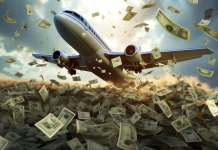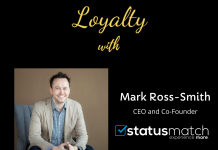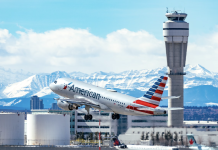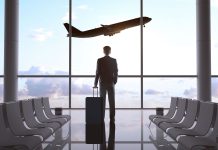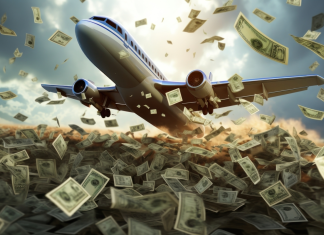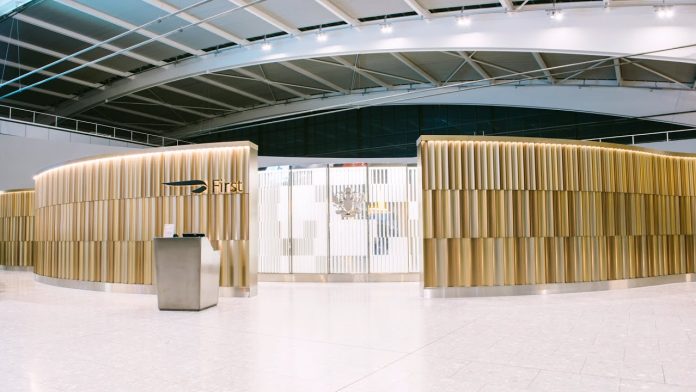
Lessons from online dating help show why a status match programme is the best way for airlines to acquire high-value passengers, fast.
Consider online dating, and you might imagine gorgeous girls and hunky guys falling in love at first swipe. The reality is not so sweet, as robot profiles, matches that go nowhere and a sense that a better option is always available can turn even the most romantic heart into stone.
The economics of the dating market might make few hearts race, but they do explain why it is so tricky to find love online and present some interesting lessons for airlines too.
Online dating is a tough market because of the customer acquisition cost, and the amount of money that platforms have to spend to bring somebody on board. In London for example, an advert on tube trains will be seen by millions of young and affluent ABC1 travellers but will cost more than £100k ($117k). Parties, online ads and other marketing efforts that are hard to scale eat up cash too.
As a result customer acquisition costs are so high that it costs dating platforms highly to onboard a new member, potentially hundreds of Pounds. Since nobody would join a scheme with such high subscription fees dating platforms must try and keep people interested for three months, six months or even longer to earn a profit.
This is why online dating can feel clunky – the platforms need it to work just well enough that people stick around but not so well that they meet the love of their life in just days or weeks. Their ideal member is somebody who is savvy and persistent enough to eventually win a partner but not so drop-dead gorgeous that they will be in and out quickly.
Check your mates
Airlines have ideal members too. You might think that the most profitable airline passengers are those buying expensive fully-flexible fares (see article) in first or business class. They have all the glamour and enjoy priority service from cabin crew and ground staff. But in fact they are not the most desirable passengers for three reasons.
Business travellers tend not to have autonomy regarding which airline they fly or when they travel, so airlines wooing this segment have to worry about marketing to a buyer who is not a passenger. These tickets are also more likely than others to have a proportion of their fare rebated to the buyer as a sales incentive, so the sticker price on the coupon is more than the revenue an airline receives in the end.
And when a passenger buys one of the last seats on a constrained flight fares can be astronomical – think £15,000+. But the reason these prices are so high is that there are not many seats left and demand is high too, so if I do not buy one the airline can sell it to you instead.
Last-seat-last-minute passengers have high face value but little loyalty value. They are the one night stands of aviation.
Airline attraction
Instead, the passengers airlines most want to attract is those who choose to travel on off-peak flights and flights that are not fully booked.
This is because of one of the basic principles of revenue management, the spill and spoil model. When air fares are low, some people might buy tickets that are priced less than their willingness to pay, which we call “spilled revenue” in the trade.
But when fares are high the risk of some seats being wasted, or “spoiled”, goes up too, Revenue managers attempt to balance the two effects to maximise overall revenue.
Applying this principle to customer acquisition, an ideal customer acquisition strategy for airlines will be one that delivers passengers who regularly buy seats on unconstrained flights. If these passengers regularly buy seats in comfy premium economy, plush business or luxurious first class then so much the better.
Since the planes will be flying anyway, any seat sold because one of these passengers comes along is almost all pure profit for the carrier. In dating terms, they are the passengers you would be proud to introduce to your parents.
Matching methods
One of these ideal strategies is to do a status match, offering people who have status on another airline the same status on yours.
Status is an important ingredient of airline loyalty programmes, which as funky fintech rather than boring old operations are probably the most valuable asset of modern airlines (see article). Shiny gold and silver cards give access to comfy lounges and help passengers whizz past queues with priority security and boarding.
Unlike mileage currency which can be earned on co-brand credit cards like BA’s Amex (see article) or Virgin Atlantic’s Mastercard, earning status is normally only possible by paying for flights and sitting on planes for tens of thousands of miles. A few airlines like Virgin count flights paid with points for status but most of the time top-tier benefits are only achievable by paying cold hard cash.
As a result retaining status is highly desirable for those who already have it. Don’t fly and they lose the perks. It also acts as a barrier to entry for competitors if people get the best seats and lounges on their ‘home’ airline but not another.
If points are the mechanism by which airline loyalty generates income from third parties, status is the driver of income from current passengers. Status helps keep demand high because people would accept a few more business trips or take a short holiday to achieve status (see article).
Status also boosts willingness to pay because travellers actively seek out their preferred airline even if it is not the cheapest. People may be unlikely to pay hundreds or thousands more to travel with their main airline, but they might pay tens and every little helps. Airlines with passengers who value their status can even spend cash when they have miles to burn, helping the airline maintain cash flow and avoid mileage devaluations (see article).
With a status match programme airlines can overcome all the barriers to entry for new passengers without the pricing team needing to abase the tariff. Prospective passengers know the flights are safe and the seats are comfy but they are worried about not enjoying the little perks status offers. Airlines can also generate a new but significant revenue stream at low cost if they charge a small fee for the match.
Passengers joining a loyalty programme through status match are already ‘trained’ to spend money with airlines and are proven to take many flights a year. This makes them highly desirable partners.
According to travel technology firm Loyalty Data Co, up to 60% of people who get a status match go on to buy tickets. If a ticket is typically $1,000, 1,000 status matches would lead to $600k revenue, 10,000 would give $6 million and 100,000 would generate $60 million. 100,000 status matches at $10 a piece would also generate $1 million in revenue just from the matching.
Status is the long-term relationship of aviation, so if airlines did online dating and were savvy about it they would choose status match not seats or cabin service as their cover shot.
Brand new
One of the reasons that people turn to online dating is that meeting new people in real life with all the commitments of work, family and friends can be hard. It is the same in aviation too.
Co-brand credit cards with sign-up bonuses can bring new passengers in. Your favourite airline revenue economist recently took out a Virgin Atlantic Mastercard having never flown the airline because they offered 30k rather than the usual 15k points for signing up. With an upgrade voucher provided once I hit £10k spend I will soon have enough points for a redemption in Upper Class (Virgin Atlantic’s business class).
A status match programme works in the same way. It provides benefits quickly. There are three flavours of match:
- Match a standard status holder, e.g. match American Airlines Platinum to Delta Gold. This is the most common form of status match and will continue to be so as a typical airline can have thousands of status members. Chilean carrier LATAM is doing a status match right now, powered by statusmatch.com, to inspire status holders at major north American carriers Air Canada, Alaska Airlines, Delta, JetBlue, Southwest, United and WestJet to fly LATAM.
- Some regular premium cabin travellers are too small for a corporate contract but still provide hefty revenue, so an airline welcoming these passengers will be able to offer immediate top-tier status. Often a status broker will have identified and vetted these passengers in advance and the airline will pay the broker a commission based on miles flown or points earned.
- A few VIPs also attract high status, even if they do not fly much, and airlines invite them to special parts of their programmes that are not accessible by flying alone. Emirates call their invitation only programme iO and BA have a Premier tier. These travellers are selected by airlines based on special criteria known only to the board. Mostly it will be down to a commercial relationship and directors controlling travel budgets big spending corporate clients might expect an invitation. Some airlines might also invite celebrities, royalty or government ministers.
Now may be the best time ever to do a status match programme
During COVID many airlines extended status for the duration of the pandemic. But now people are flying again, if passengers want to keep their shiny cards they will have to fly.
Unfortunately many loyalty programmes award membership based on spend in a calendar year. Since borders have not been open for all of 2022, many flyers will have been unable to take enough flights to renew. Consider BA for example. Their top-tier Gold Guest List status requires 11 longhaul business class return tickets, nearly one a month. Ordinary Gold takes six and Silver three. For many travellers there will simply not be enough time between now and their status expiring to take that many flights.
BA operates a rolling calendar model where different members have different year-ends. But conceivably many of BA’s passengers with year-ends in early 2023 will simply lose their status. There is now a window of opportunity for other airlines to steal BA’s best customers by offering a status match that gives top tier perks for a whole year, potentially emptying BA’s fabulous Concorde Room at Heathrow Terminal 5 (pictured).
It is also likely that as 2022 comes to a close fares will come down (see article). Running a status match programme in October or November will help airlines keep demand up.
Status match beats status challenge
Sometimes airlines considering a status match also evaluate a status challenge. Status match gives status immediately to anyone who already has it with another airline. Status challenge on the other hand, requires completing a certain number of flights in a certain time to earn status.
Status match has the advantage of lower barriers to entry for existing status holders as they enjoy the perks of status on their first flight. Status challenge has the advantage of being accessible to anyone. But given a choice between the two, I would almost always choose status match.
Not only does status match make it easier for people to take their first flight, it also pre-qualifies the members as established flyers with a track record of spending money with airlines. Status match attracts more desirable members than status challenge.
How Revenue Management & Loyalty can work together
Loyalty and Revenue Management (RM) teams tend to have slightly different perspectives. Loyalty is focused on lifetime value and RM is more transactional. There are three opportunities for loyalty and RM to work together when it comes to status match.
First, by combining RM and loyalty data it is possible to understand when people who achieve status organically are buying tickets (see article). It might be desirable to run a status match programme at other times.
Second, if RM and Loyalty can ensure newly status matched members are rewarded when they make a booking this would be high visibility and high impact. There might be a sweetener like perhaps a small bonus of 1,000 extra airmiles as well as the higher status. It would be the airline equivalent of the restaurants that offer 10% off if you join a loyalty programme today.
Finally, RM is a powerful department in an airline. They can decide whether or not to accept a passenger for a flight and can open and close inventory at will. In principle, RM could have the power to demand that a passenger gets status if there is reluctance elsewhere in the airline’s management to run a status match. If RM and Loyalty worked together in this way, it could help airlines run a status match-like trial without making a public commitment.
RM might not realise it, but they have always relied on ~10% of the loyalty database to deliver ~30% of the revenue. As travel recovers, these people might have changed loyalties. Travellers have been single for a while, but they are starting dating airlines again and not everyone will go back to their old partners.
Is your airline ready for this once-in-a-lifetime opportunity? Let me know.
Originally published on Airline Revenue Economics by Oliver Ranson


